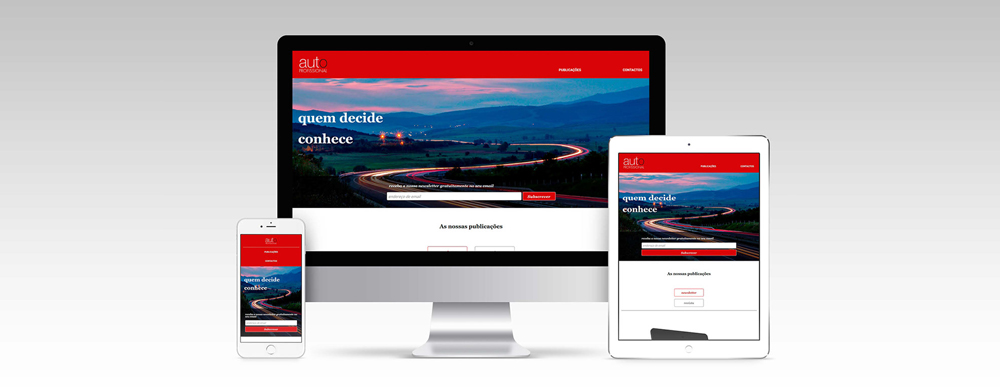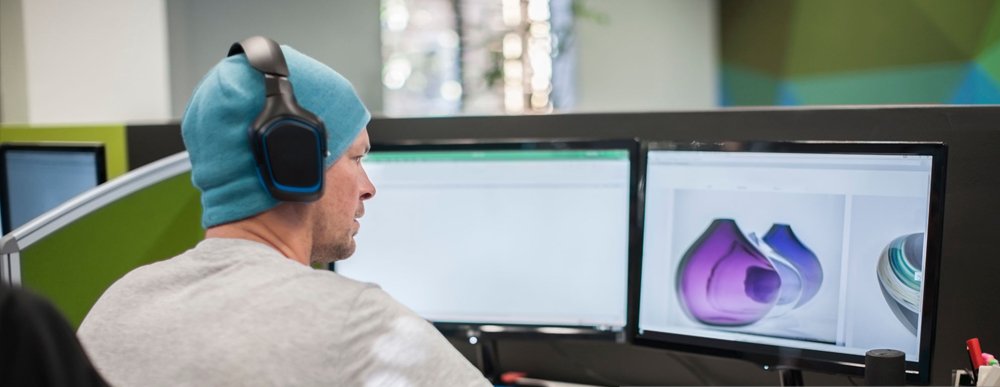There are billions of internet users all around the world. The UAE is considered to be one of the most connected countries in the world with having almost 95 percent of the population with internet access. It is extremely important for a business located or operating in Dubai or anywhere in the UAE to have a strong online brand presence. Along with that, the web design market is continuously evolving, each day brings something new. The best practices or standards or market norms are also evolving, a very effective design practice that was widely praised suddenly gets out of fashion and no one wants it. Similarly, the technologies that are used to build websites are also changing, but mostly in a good way. The web designers will have to be able to choose appropriate tools and technologies to ensure the websites they are creating will remain relevant for many coming years.
The websites and online user experience are becoming more important day by day. Businesses are more concerned about their online user experience and the web designer’s work is getting more challenging. Designing and developing a successful website that meets all the expectations of the clients is getting tough day by day. People’s behavior, market trends, and technology itself are evolving on a rapid scale. It is extremely important that the web designers use such tools and technologies that can easily be scaled for future needs if required and they must have to be capable enough to create and manage sophisticated projects without exceeding the budget and timelines.
Here are the five most difficult challenges each web designer faces while working in Dubai, UAE:
Challenge No. 1: The Budget and Timeline

The very first stage of any web designing project is the agreement. One thing that every web designer will agree to is that the website designing project’s budget and timeline never match with the budget and timeline of the client. Especially in Dubai and all around the UAE, the clients are always seeking a very excellent performance in a very limited timeline and budget. In my almost a decade-long career as a business analyst and salesman, I have never encountered a single client who agreed to my terms, there is always a long negotiation. But eventually, we have to try to align everything as per our client’s terms to ensure their satisfaction. This poses a great challenge to web designers and web developers.
Another very common occurring situation is that the customers usually don’t want to disclose their budget. If you ask them, they will most probably say, they don’t have any budget. If you tell them how much your average quote is, they will immediately say it is too much. Anyways, it is very important that the web designer and the client both agree on a certain budget before starting the project.
Another very common occurring situation in Dubai, UAE is that the clients want to complete the website as soon as possible. Sometimes they have some event coming next month, or they are launching some new products or services and want to revamp the website or any other factor. Whatever the case is it is pretty much sure that each client will insist on having a website as soon as possible. Once the objectives and basic ingredients of the website are agreed upon, then the client insists on having everything done within their timeline. Which is a big challenge. The best way is to negotiate for an intermediary timeline, even then it could be challenging in some cases.
Challenge No. 2: Web Design and User Experience

In Dubai and all around the UAE it is a common practice in the web design industry that the web designers usually provide a few basic design options or mockup designs. Then the customer chooses anyone of them to proceed further. Usually, the homepage design is prepared, but when the design is shared with the client wants revisions, and most of the time unnecessary revisions consumed a lot of time. As the inputs are coming from the client too, so the web designers must have to consider them too, or either they will have to convince the client that their suggestion is not as effective. These things consume a lot of time and make it even more challenging for the web designer to maintain a great user experience and user journey.
So rather than only focusing on making the design looking good for the client, the web designers’ job is to make the user experience flawless. As the clients are not as that experienced and most probably they are also not very up-to-date. So, it is the web designer’s job to make sure the website or web app they are building should be capable of providing a great user experience and user journey. This may sound simple but it is not, usually, web designers got into disputes with clients on certain design-related things. Which not only makes the customer unhappy but also results in a sub-standard outcome. This is why it is a big challenge to keep your client happy as well as ensure the final outcome offers an ultimate user experience. All that should be done within the agreed timeline and budget as well.
As in Dubai and all around the UAE there are too many web designers, so it is extremely important to keep your client happy throughout the entire project execution process as well as even after the project completion by ensuring the final product achieves the desired objectives and make your client even happier.
Challenge No. 3: Responsiveness and Cross-Platform Compatibility

As we all know that the majority of internet users all around the world are surfing the internet from their smartphones or mobile devices. It is estimated that around 60% of online searches are made from smartphones and mobile devices. Here in UAE, almost 95% of the population have access to high-speed internet and almost everyone also owns a smartphone. This makes smartphone compatibility very vital for a successful website project. Smartphone compatibility is commonly known as responsiveness. These days almost 99% of websites are created with responsive features.
The responsive web design fits itself automatically as per the screen size it is being opened from. This feature is very hard to achieve. Most of the time the web designers use some framework as a foundation to build websites. The framework comes with in-built features to support the responsive effect. Responsive websites can easily render themselves according to the screen size. The big challenge is to maintain the same user experience and customer journey on all supported devices. As smartphones and other mobile devices are small, so the website should have to render itself in a way that all the content can be presented accurately. For example, if your regular or desktop website has a CTA on the upper right corner and your address is coming at the bottom of the page, a smartphone user will also expect the same positions for these two elements and so on and so forth. This is how user experience and customer journey are managed in responsive web designs.
As there are different screen sizes similarly there are different platforms too. For example, the two most commonly used platforms are Windows OS and MAC OS. Both have different browsers such as in Windows the Internet Explorer or Microsoft Edge and in MAC the Safari is the default web browser. Moreover, Google Chrome, Mozilla Firefox, and Opera are the most famous internet browsers. Each browser is built on different technology and different platform, each processes the website code differently. Mostly all the browsers return the same output which is the website and its user interface but in some cases, the design may look slightly different on different browsers and different platforms. This is where cross-platform compatibility comes in handy. The websites equipped with cross-platform compatibility ensure a similar user experience and user interface on all supported platforms and browsers.
Optimizing websites for different screen sizes and enabling compatibility for different platforms and browsers is a big challenge for web designers. Usually what happened is when you fix something in one platform, it impacts something else on some other platform, hence rectifying such issues is a very time-consuming task.
Challenge No. 4: Website Loading Speed

The website loading speed is the biggest challenge these days. As most of the websites contain a lot of images, graphics, and in some cases videos too. So managing the loading speed is a big challenge for web designers. Even though in Dubai and all around the UAE where people have easy access to high-speed broadband internet, optical fiber connections, and 4G technologies the loading speed of a web page is a big issue. It is a common belief that the website loading speed depends upon the internet speed at your home or office or a mobile device, but in reality, it has nothing to do with that. Especially in a very advanced and developed country like UAE, where the minimum internet speed is much higher than almost half of the world’s premium internet speed the internet is not an issue at all.
However, the website loading speed depends upon the programming, media management, and hosting of the website. Usually, a web page weighs around a few MBs, however, the internet speed is usually double or triple the size of a regular web page. So, if your website hosting is not good, it can’t push data at an optimum speed, the website loading speed will be slower. If your hosting is good and it can upload data quickly to the browser then the website loading speed will be quicker.
The internet, web browsers, and computers are connected through networks, and these networks are programed and managed as per certain rules and regulations, usually called protocols. The actual websites are stored at servers, which are very high-speed computers and they allow the web browsers to download media and source code from the server to execute them to render a website on the screen. All hosting servers worldwide allow only certain data requests per second, so if you have too many design elements, you won’t be able to download them all in one second, in fact, a regular website requires multiple seconds to get downloaded. This is why the website loading speed depends so much on the server. But if your server is good, but your website is not programmed properly, it still might going to take several seconds, in some cases minutes to get a full-page downloaded on a user’s computer.
This is a big challenge for modern-day web designers. Usually, web designers choose a good hosting service, program their website accordingly to utilize the maximum capacity of the network/protocols to make things download in parallel. Some other methods are also used, one of the most common is to download the page upon scroll, as the user keep scrolling downwards, the page keeps downloading. There are certain methods and techniques to make the website loading speed better but all these methods are not so easy to work with.
Challenge No. 5: Website Security, Data Protection and Third-Party Integrations

The internet world is very modern advanced and technologically sophisticated. A common man can’t easily absorb all those technicalities. This is why the professionals who are making websites, software, computer programs, and web applications are struggling really hard to make a user experience secure and well-protected. Website security and data protection is also a very sensitive and extremely important matter. There are certain programming techniques used to prevent the most commonly occurring internet attacks to ensure user protection and privacy. But enabling all those security measures on the websites is not an easy task, especially with some very interactive, fancy, and cool-looking websites, the website designers and programmers will have to spend weeks to make them protected and immune against internet attacks.
In the modern world, data protection and privacy are a big concern of a common internet user. Everyone got awareness through news outlets, blogs, government campaigns, and much more. So, people are also more concerned now. It is very important to ensure the highest level of security on your website, especially those website which have online payment facility or are collecting the personal and private information of their visitors. A website designer must have to take the necessary measures. This is a very challenging task and requires a lot of time and effort.
Third-party integration in a website is also a very difficult and time-consuming task. For example, if a website has online payment functionality then the web designer must have to integrate some payment gateway with the website. Which further requires more effort and time. Another most common integration is the social media profiles integration. Everyone knows the importance of social media. A website which allows their visitors to share the content of the website on social media requires social media integration. Which if needed for multiple social media platforms requires even more time and effort. Given all those circumstances maintaining a great user experience across all different platforms and devices is a very tricky job. It requires tons of effort and a lot of time which is a big challenge.
Conclusion
Any website design agency in Dubai, UAE faces certain challenges while working on a web design project. The first and the biggest challenge is the budget and the timeline. Customers are always reluctant to share their budgets and they are always anxious to complete the project as soon as possible. Sometimes some customers have deadlines to meet, and targets to finish the project beforehand, which is a great challenge for a web designer. The next very difficult job is to bear the pressure of the ticking clock and endless revision requests from the client while working on the user interface and user experience. The two things that every professional web designer will have to deal with is the endless revisions by the client and the quality of the design, user experience, and user journey. The website loading speed is another big issue these days, as in Dubai and all around the UAE the multimedia content, heavy graphics, interactive features, and even video content is gaining popularity which makes the entire website very bulky and heavy to load. So, website loading speed is also a big challenge for a web designer.
These days’ websites are getting more complex and sophisticated. Businesses are offering a lot of online services, third-party integrations, and much more. Some websites also collect user’s data. Under such circumstances website security, data protection, and third-party integration are a big challenge. Along with that the responsiveness, SEO friendliness, and cross-platform compatibility make things more difficult and challenging for a web designer. On top of that, the pressure to complete everything within the timeline also intensifies everything. There are so many website designing agencies but only a few stand out. RSI Concepts is one of the leading web design agency in Dubai, we are specialized in website and web application building and have dedicated teams for certain tasks, which enables us to not only execute the project very swiftly but it also allows us to reduce the cost. If you need a website or looking to revamp your existing website, feel free to reach us through our Contact Us page or leave a comment in the comment box below and we will get in touch with you soon.
Check out this: Website Designs – Guide 2021


